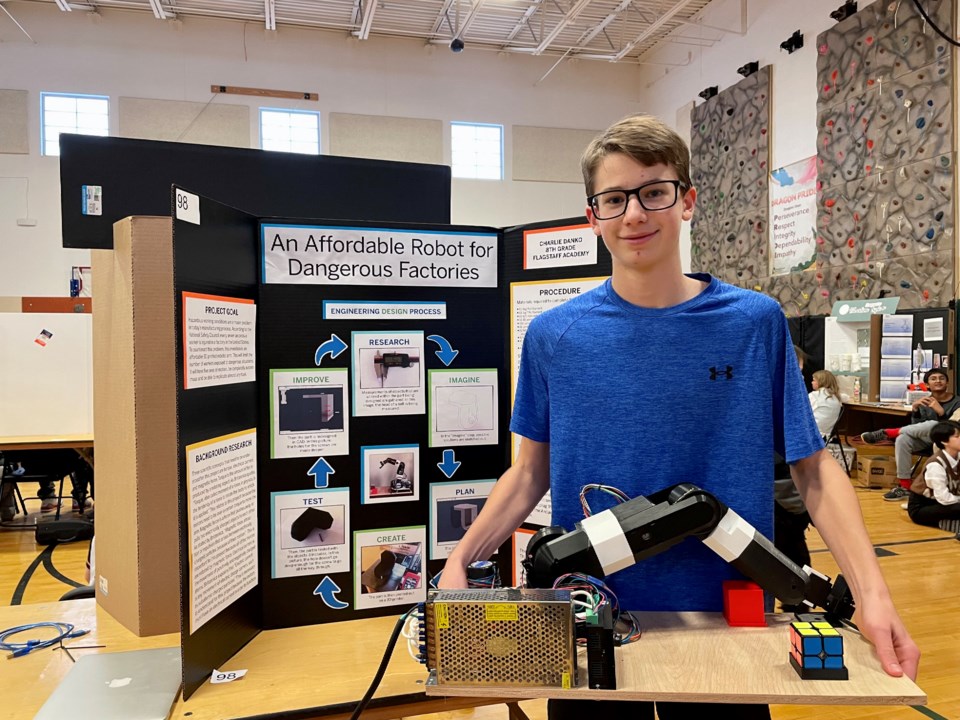Charlie Danko, an eighth grader at Flagstaff Academy Charter School, isn’t content with just creating robotics — he wants to save people’s lives too.
For his school’s annual STEM fair, he 3D printed and programmed a robot that aims to make workplaces safer.
“My project is an affordable robot for dangerous factories,” Charlie explained. “So the problem I’m solving is hazardous working conditions, which are a major problem, because once every seven seconds a worker is injured in the United States due to unsafe working conditions. The robotic arm will limit the number of people exposed to these conditions.”
Charlie presented his robot alongside more than 150 other students’ projects at the STEM fair, which was held Tuesday at the school. He said students really enjoy the event.
“I think it’s important because kids can show the teachers what they’re interested in, and actually think of something that could be useful in the future,” Charlie said.
The STEM fair included projects from students in grades six, seven and eight, who were competing to advance to the regional STEM fair. Charlie ended up winning first place, followed by eighth grader Diya Mehta for her project on environmental effects on sea urchin embryology. Seventh grader Rahul Agarwal won third place for his no-waste hot water dispenser.
“The students ask a question about something related to science or engineering or mathematics, and then they try to prove it, or test it, to find out that idea,” said Katy Gustafson — executive principal at Flagstaff Academy Charter School. “The projects were due last week, and then students who choose to, come to the STEM fair and present to a panel of parent and adult judges.”
And the turnout was impressive — around half the students in the middle school chose to create a project, Gustafson said.
“The kids combine so many different elements of STEM during this, which is very exciting,” she explained. “It’s fun to see this and to have done it for many years, and to watch the evolution of these kids.”
One seventh-grade student created a biometric locker — which uses her fingerprint for access — for the 2021 STEM fair, Gustafson said.
“She did the coding to do that — now she’s improved upon it this year as well, and so she’s competing again to see if she can continue on to the next level, which is really exciting,” Gustafson explained.
The STEM fair highlights one of the school’s central messages, which is “science for everyone,” she said.
“We want science to be accessible, because it’s part of the mission and vision of our school, is to create well-rounded, ethical leaders that have a foundation based on science and technology,” Gustafson explained. “So the fact that so many middle-schoolers feel so confident to present to adults about their projects and their findings is really great.”



